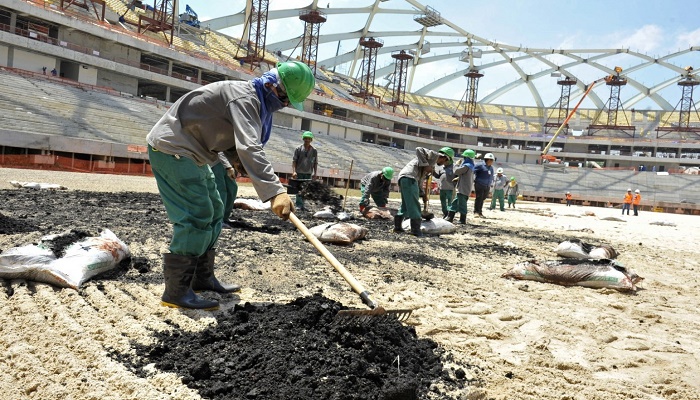Migrant laborers working on stadiums in Qatar are still subject to abuse and exploitation
YemenExtra
Amnesty International says that Migrant laborers working on stadiums for the 2022 World Cup in Qatar are still subject to abuse and exploitation
“It’s a year since Amnesty International exposed the exploitation of migrant workers who helped to build the Khalifa International Stadium, but abuses on Qatar 2022 sites have continued,” James Lynch, Amnesty’s deputy director of Global Issues Programme, said in a Thursday statement.
“Qatar’s World Cup organizers have placed special requirements on contractors that are supposed to stop this happening, but the reality is that workers on their sites still live under Qatar’s repressive sponsorship system, which gives employers powerful tools to abuse them,” Lynch added.
Doha introduced the Wage Protection System in November 2015 to ensure that wages were paid electronically. Under the new system, employers that do not comply with the law face fines or imprisonment. In addition, a law making it easier for the migrant workers to change jobs and leave the country came into effect in December last year.
However, activists and trade unions said earlier this year that the Persian Gulf state violated the new labor reform by refusing to allow scores of the foreign workers to return home. Moreover, thousands of the migrant workers remain unpaid months after being recruited
“With hundreds of thousands more people being recruited to build and service at least seven more World Cup stadiums, along with the infrastructure to support the tournament, many more migrant workers are at serious risk over the next five years,” the Amnesty International official stated.
The 80,000-seat Lusail stadium, which is among at least eight venues for the 2022 World Cup, is due to host its first match — the country’s Emir Cup final between Al Sadd and Al Rayyan — on Friday.
Since becoming the World Cup 2022 host in 2010, Qatar has spent billions of dollars in city renovations such as a new airport, seaport and an underground train system. Hundreds of thousands of migrant workers have been recruited for the task and reportedly account for around 90 percent of the country’s 2.2 million population.

